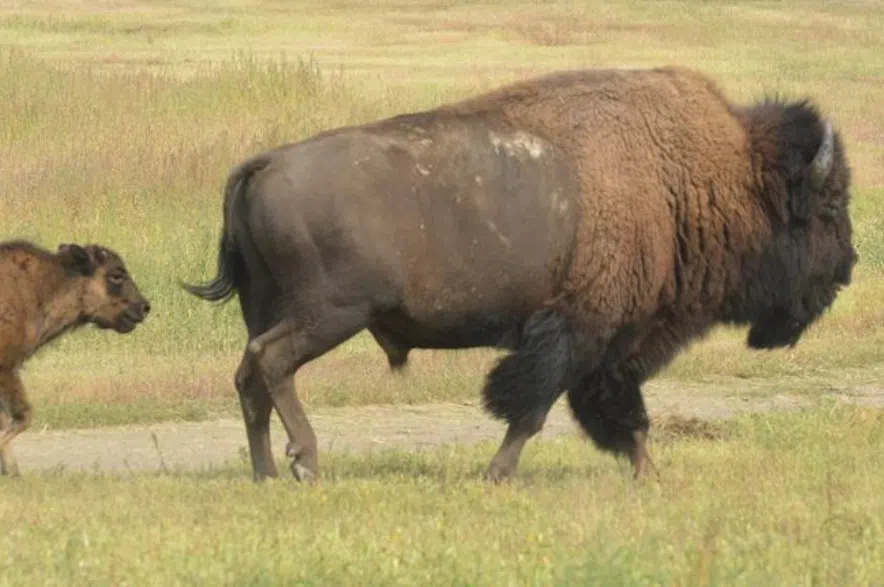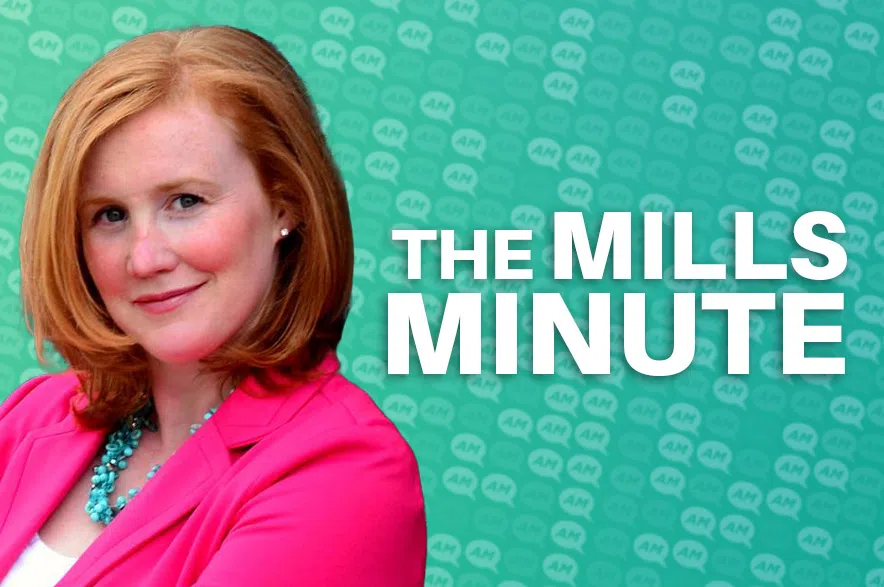As the sound of ceremonial drums echoed through the fields, a large crowd of people gathered with anticipation this week just south of the Battlefords to witness a historic moment.
For the first time ever, a family of 11 purebred Yellowstone bison were released onto Canadian soil, marking a powerful moment of cultural restoration and cross border Indigenous collaboration.
Read more:
- GPS tech making it easier for visitors to view bison herd at Sask. provincial park
- ‘Calm as can be’: Bison Day offers a taste of massive animals at Agribition
“This is a historic day,” said Chief Tanya Aguilar-Antiman of Mosquito, Grizzly Bear’s Head, Lean Man (MGBHLM) First Nation.
“For this herd of buffalo to be here in Canada, here in Treaty 6 territory, in the Battlefords, it’s powerful.”
The bison, gifted by the Fort Peck Assiniboine and Sioux Tribes in Montana to MGBHLM First Nation, were sent as part of a Buffalo Treaty, a historic agreement between tribal Nations in Canada and the U.S. aimed at restoring bison populations and renewing cultural ties.
The Yellowstone bison, some of the most genetically pure in the world with over 99 per cent wild lineage, arrived in Saskatchewan in February after more than a year of preparation and cross-border regulatory processes.
They spent six months in quarantine on MGBHLM land before being released into a new 300-acre pasture. The event was marked by ceremony and community, including traditional songs from a Mosquito First Nation drum group to guide the animals into their new home.
The release didn’t go entirely as planned though as with the large crowd it took nearly 90 minutes to coax all 11 bison from their enclosure. But once they did, they stormed onto the land in a moment that felt as spiritual as it was symbolic.
“This is about more than just bringing back the buffalo,” said Sonia Gardypie, Lands Manager for MGBHLM.
“The buffalo help the land. They bring seeds in their beards, they regenerate the environment, and for some reason, the buffalo are attracting other animals…antelope have never been seen in this area, but since the buffalo have been here, they’ve been coming.”
MGBHLM now holds two herds of bison, the newly arrived Yellowstone herd and another 22 plains bison given from Elk Island National Park in 2023. It’s the only First Nation in Canada to manage two herds.
“What we’re doing now is developing a buffalo strategy,” Chief Aguilar-Antiman added. “We’re consulting with our elders and staff as to which direction we are going and what is our plan with having two herds…we are looking forward to the outcome.”
The release is also deeply cultural. For many Plains Indigenous peoples, bison were once central to life, providing food, shelter, tools, and spiritual guidance. Their near extinction during colonial expansion was a loss not only of sustenance but of tradition.
“Bringing back the buffalo also identifies or signifies the loss of our culture, of our heritage, and our beliefs,” Gardypie said. “We lost the buffalo since the treaty, and we lost a lot of our ways. This is a way of bringing back our teachings, humility, love, trust, honour, all these things go hand in hand with the buffalo.”
Beyond cultural revival, the bison are also part of a long-term tourism and education strategy for the community.
“It is our goal to share the Nakoda history and the rich history that we have in the Battlefords,” said Chief Aguilar-Antiman. “The buffalo will help us tell that story.”
Currently, over 150,000 bison live on farms, ranches, and public lands across Canada, with over 45,000 in Saskatchewan alone, according to Canadian Bison Association and Saskatchewan Agriculture data. But few of those are as genetically pure or culturally meaningful as the Yellowstone herd.
“This herd is a message,” said Chief Aguilar-Antiman. “That when nations work together, we can achieve something powerful. It’s the spirit of the buffalo bringing people together.”
— by Austin Mattes
Read more:











